(I assumed a Cartesian coordinate system with the positive x and y pointing to the right and up respectively)
Given a line going through the points (a, b), (c, d), its equation is:

Now you have a point (e, f). If you substitute x=e, y=f, and they satisfy the equation, that means the point is on the line.
If the left side of the equation is bigger, that means your point is on the top of the line. If the right side of the equation is bigger, that means your point is below the line.
To figure out left/right, you need to consider the gradient as well. If the gradient is positive, being below the line means you are to the right of it. If the gradient is negative, being below the line means you are to the left of it. Vice versa.
Note that you need to handle vertical lines as a special case.
In Java,
double lhs = e;
double gradient = (b - d)/(a - c);
if (Double.isInfinite(gradient)) {
// vertical line, compare only x coordinates
if (e < a) {
// on the left
} else if (e > a) {
// on the right
} else {
// on the line
}
}
double rhs = (gradient * (e - a)) + b;
if (lhs > rhs) {
if (gradient > 0) {
// on the left
} else if (gradient < 0) {
// on the right
} else {
// on the top
}
} else if (lhs < rhs) {
if (gradient > 0) {
// on the right
} else if (gradient < 0) {
// on the left
} else {
// below
}
} else {
// on the line
}
To prove that rearranging the order of the points doesn't change the result of this is quite simple. Changing the order of points produces this equation (a changes to c, b changes to d):

If you expand both the above equation and the one at the start, you will see that they are actually the same equation, which is:



